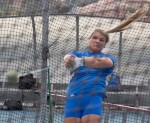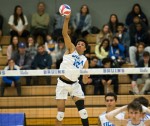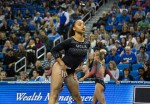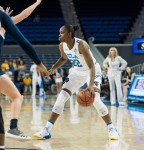We rightfully want to learn from history’s mistakes, but navigating the uglier results of history can often be both difficult and muddled. However, interaction with history doesn’t have to be stagnant: in Hidden Histories, Daily Bruin staffer Alexandra Ferguson will reflect on various aspects of Los Angeles’ history.
In the hills north of downtown Los Angeles, near Dodgers’ territory, sits a shallow canyon called Chavez Ravine, once home to generations of Mexican-Americans since 1900.
Though by no means wealthy, the area was self–sufficient, with many residents growing food and running area schools, churches and stores. Behind the story of this thriving community lies a larger story of Los Angeles’ rampant housing discrimination.
Understanding Chavez Ravine’s development and subsequent demise requires some understanding of Los Angeles’s housing practices at the time.
The Home Owners’ Loan Corporation, a 1930s facet of Franklin Roosevelt’s New Deal, implemented policies designed to turn America’s citizens into homeowners. The HOLC brought low-interest loans that allowed citizens to purchase homes without making large down payments. The Federal Housing Act, created in 1934, sought to strengthen the power of private banks and liberalize loaning policy. Under the FHA, citizens were granted guaranteed mortgages with private financial institutions.
Such policies and organizations were expressly created to make it easier for Americans to own a home. However, these practices were not immune to the era’s racism.
In 1935, the HOLC systematically collected data about neighborhoods in 239 cities to assess mortgage risk. With this data, neighborhoods were ranked from A to D, with A neighborhoods representing the least risk and best investments for banks and homeowners; B neighborhoods were deemed still desirable; C were those declining, while D areas were considered hazardous. Represented visually on color-coded maps, the data was cast in green for A, blue for B, yellow for C and red for D – thus birthing the term “redlining.”
Though considered objective, these ratings were riddled with racist criteria to deem some neighborhoods “desirable” and others “hazardous.” Ethnically homogeneous and majority white neighborhoods received higher scores than more diverse ones; neighborhoods with majority minority populations were often assigned “red” scores.
This classification system drove banks away from neighborhoods with African-Americans, Mexican-Americans, Asian-Americans and sometimes immigrant groups that were newly arrived such as Slavs, Jews and Italians.
Redlining subsequently prevented many would-be homeowners from securing loans otherwise within reach. Not only did redlining derail many from ownership, but maintenance, improvement and renovation loans were also scarcely approved, casting residents in a vicious cycle: inability to improve neighborhoods triggered disrepair and decline, seemingly justifying redlining practices.
Redlining, increasingly associated with race and class, was functionally segregation. White residents moved away from minority populations they perceived as “threatening” to home values.
After surrounding neighborhoods with even slightly higher HOLC ratings viewed Chavez Ravine as an “eyesore” and “vacant shantytown,” the Los Angeles City Housing Authority targeted it for redevelopment.
The American Housing Act of 1949 granted federal funds for city public housing, prompting then-Los Angeles Mayor Fletcher Bowron to approve the building of 10,000 new units – with about 4,000 of those planned for Chavez Ravine.
In the summer of 1950, Chavez Ravine homeowners were informed they needed to sell their homes to accommodate the proposed “Elysian Park Heights” housing project. Feeling their only choice was to move, some residents sold their houses immediately, while others remained “squatters” on their own land. Sellers received payment far below their homes’ value.
To displace Chavez Ravine residents, the city used eminent domain, a power that allows government to legally uproot homeowners for public projects. With land titles permanently revoked from the homeowners, many remaining houses were set ablaze, which the fire department used as practice sites.
Though Los Angeles city government adamantly pursued permanently displacing landowning families for the greater “public good,” political sentiment was meanwhile shifting to the right, away from large-scale public projects.
This rightwing pivot during America’s 1950’s “Red-Scare,” conservative Republican Norris Poulson’s Los Angeles mayoral run centered on anti-public housing rhetoric, decrying public housing as “a secret communist strategy to create communist cells in the heart of downtown.” While incumbent Mayor Bowron continued to defend the “Elysian Park Heights” project as an opportunity to house thousands of Angelenos who couldn’t otherwise afford housing, detractors – conservative politicians and private businesses hoping to purchase the land – echoed the narrative of a larger communist plot. With the Los Angeles Times also denouncing the project as “creeping socialism,” the neighborhood seemed destined for senseless destruction.
The project was so heavily scrutinized that Frank Wilkinson, assistant director of the Housing Authority of the City of Los Angeles and an Elysian Park Heights’ supporter, was questioned by the House Un-American Activities Committee, and subsequently fired and sentenced to one year in jail.
Under growing pressure from both the Los Angeles public and local government, the LA City Council turned to federal courts, hoping to cancel the project, but courts ruled the contract legally binding. By this time, only a few families remained on what was formerly their land.
The project was not halted until 1953. Poulson’s mayoral victory also enabled him to buy back Chavez Ravine land from the federal government, as long as as long as the land was used for a public project.
While the “Elysian Park Heights” project floundered, Kenneth Hahn, a member of the LA County Board of Supervisors, began to scout sports teams willing to relocate to Los Angeles. Despite Los Angeles’ rapidly growing population and cultural prominence, the city still had no major sports team.
In 1958 Dodgers owner Walter Francis O’Malley struck a deal with the city: O’Malley was allowed to purchase the Chavez Ravine land for a fraction of what the city had spent, attempting to prepare the land for the cancelled housing project.
Despite the fact that over 1,000 families previously thriving in Chavez Ravine were forcibly removed for a housing project designed to give them housing in return, Los Angeles voters soon approved the deal to award the land to the Dodgers. Few original Chavez Ravine residents remained on the land then, but in 1959, police came to personally evict the remaining “squatters.”
Those still favoring the original housing project heavily opposed the stadium plans, accusing Mayor Poulson of betraying the public by making illegal deals with the Dodgers. Still, with a public referendum, a mere 3-percent victory for O’Malley and his Dodgers allowed construction to begin in late 1959.
When Dodger Stadium opened in April 1962, no remnants of the former residents’ schools, churches or homes remained. Though permanently evicted, Chavez Ravine’s community is not completely forgotten.
Buried Under the Blue, a group founded by two great-grandchildren of displaced Chavez Ravine families, is dedicated to the remembrance of the community, spreading awareness of the neighborhood’s story and organizing events.
Wilkinson, a planner of the original housing project, called the outcome “a tragedy for the people, and from the city it was the most hypocritical thing that could possibly happen.”
President Donald Trump has threatened since his campaign to use the power of eminent domain to build a border wall, and, in the recent government shutdown, is talking about expanding even further the powers of eminent domain.
In recent months, homeowners along the border between the United States and Mexico have received letters from the federal government requesting access to properties as the first in the two-step process of eminent domain, it becomes clear that similar powers used in the Battle of Chavez Ravine are still at play today.
When much of the rhetoric surrounding questions of immigration mirrors that of supposed “communist plots” of the 1940s, it’s no wonder similar political tactics arise.
Though consequences of an unnecessary border wall are quite different than those of a baseball stadium, the Battle of Chavez Ravine, spanning ten years, sheds some light on Los Angeles’ history. From racist zoning practices fueled by Red Scare politics to ideals of public good marred by predatory evictions, the quintessentially American birth of a sports stadium reveals a shameful history buried in our “favorite” pastime.






